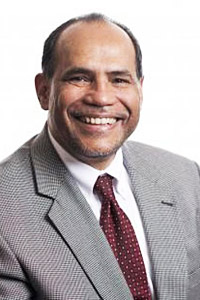More than two decades of unprecedented growth and poverty reduction have made Asia a largely middle-income region. This rising prosperity is encouraging governments to think bigger on development, as China is doing with its infrastructure-led Belt and Road Initiative for a modern Silk Road trading route.
The region's growing middle-income status is significantly expanding the supply of (and demand for) finance for development programmes, which will help countries step up efforts to reduce poverty and promote strong and sustained economic growth that benefits everyone.
On the supply side, the higher income level has led to rising domestic savings that can be tapped by governments for investment in development and give them access to commercial credit that was not available to them as low-income countries. The options for governments to finance development spending have also widened with the emergence of new financiers for development. Nontraditional donors such as philanthropists and two new development banks -- the China-led Asian Infrastructure Investment Bank and the New Development Bank of BRICS countries -- are moving onto a stage that until recently in Asia was largely occupied by two multilateral lenders: The Asian Development Bank and the World Bank.
On the demand side, Asia's growing middle-class is increasingly calling for high-quality infrastructure, better public services, expanded social welfare programmes, good governance and a cleaner environment. As well as the changing volume of demand, the development challenges are getting more complex, requiring interventions that go beyond basic infrastructure, the mainstay of development financing for decades.
That said, basic infrastructure, which has helped stimulate growth and reduce poverty, will remain one of Asia's most important development priorities. But while the availability of more financing will narrow Asia's big gap in transport, energy, telecommunications, and water infrastructure, the region is still far from bridging it. The Asian Development Bank estimates that US$1.7 trillion a year must be spent on infrastructure for the region to sustain its strong growth. But only half of this is being spent: In 2015, developing countries in Asia and the Pacific invested a combined $881 billion on infrastructure.
An important reason for this is that there are not enough bankable development projects in the region that can attract private sector money. Indeed, the capacity for project development is low, as also shown by the slow pick-up of public-private partnerships in many Asian countries.
The traditional role of development banks -- providing financing to client governments -- is changing. Instead of providing finance, these banks will increasingly need to use their capital to ensure that the region's growing savings are leveraged and invested in Asia (instead of abroad). To remain relevant in the region, established lenders must play a much bigger role in mobilising money for development from the private sector by, for instance, helping prepare bankable ventures and providing solutions to increasingly complex development problems. The established lenders can do this by anchoring their available finance to their considerable knowledge and experience as captured in, for example, lessons learned from project evaluations and documented best practices.
Both knowledge and finance will be needed in abundance to ensure that Asia's still developing economies don't get caught in the so-called middle-income trap. This economic concept, by no means undisputed, holds that when countries attain middle-income status, they may get stuck at this level because they are no longer able to compete with low-wage, low-income countries or with high-skilled, high-income ones.
The World Bank classifies Thailand as an upper-middle-income country, thus sharing the aspirations and challenges already discussed. Research and country experiences are pointing the way to a combination of factors that can help countries move beyond the middle-income category. Among them are quality infrastructure, a business-friendly environment, available and affordable energy, innovation, strong public institutions and good governance.
Progress is being made on dealing with these challenges, but they remain part of a huge agenda for Asia -- and one that needs to be better understood by governments and their development partners. Thinking bigger and more long-term on development, and ensuring that economic growth is both inclusive and sustainable, will go a long way to meeting these challenges.
Marvin Taylor-Dormond is Director General of the Asian Development Bank's Independent Evaluation Department.
